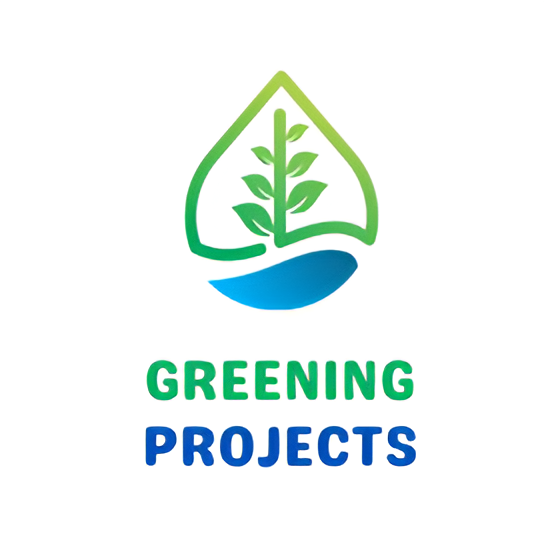Creating a Green Landscape in Unused Urban Spaces
In the heart of our bustling cities, hidden oases lie amidst the concrete jungle, waiting to be discovered and transformed. Unused urban spaces, often overlooked and undervalued, hold the potential to be revitalized into vibrant green landscapes. This transformation is not just an aesthetic upgrade; it’s a vital step towards sustainable urban living and community well-being. Let’s explore how we can turn these neglected nooks into thriving green havens.
The Call for Urban Greenery
Urbanization has brought many advancements, but not without cost. As cities expand, green spaces shrink, giving way to concrete structures. This loss has far-reaching impacts, from environmental to social. Urban green spaces are essential for biodiversity, help combat pollution, and provide a much-needed respite for city dwellers.
A Breath of Fresh Air
Green spaces act as the lungs of a city, improving air quality and offering a haven for local wildlife. They also play a crucial role in mitigating urban heat islands, making our cities more livable and comfortable.
Social and Community Benefits
Beyond environmental benefits, green spaces foster community interaction, improve mental health and provide areas for recreational activities. They become communal hubs where people can connect with nature and each other.
Uncovering Potential in Unused Spaces
Every city has its share of neglected areas – vacant lots, abandoned buildings, and underused land. Often seen as eyesores, these spaces are opportunities waiting to be embraced.
Bernal Projects Awarded 2023 Community Challenge Grants
Identifying and Assessing Spaces
The first step is identifying these unused spaces. Local governments, community groups, and residents can collaborate to pinpoint areas suitable for transformation. Each space must be assessed for its potential, considering factors like size, location, accessibility, and ecological impact.
Community Involvement and Collaboration
Involving the community is key. After all, these spaces are for them. Community workshops, surveys, and meetings can gather ideas and foster a sense of ownership and responsibility toward these new green areas.
Designing Urban Green Spaces
Creating a green landscape in an urban setting requires thoughtful planning and design. It’s about blending functionality, aesthetics, and sustainability.
Diversity in Design
The design of urban green spaces should cater to diverse needs – from quiet areas for relaxation to open spaces for play and social gatherings. Incorporating walking paths, seating areas, and playgrounds can make these spaces more inviting and functional.
Sustainable Practices
Sustainability should be at the heart of these projects. This includes using native plants, implementing water-efficient landscaping, and considering the long-term maintenance and care of these spaces.
Overcoming Challenges
While the benefits are clear, transforming unused urban spaces into green landscapes is challenging.
Funding and Resources
Securing funding can be a major hurdle. Solutions include public-private partnerships, grants, and community fundraising initiatives. Local businesses can also be involved, providing resources or sponsorship.
Regulatory Hurdles
Navigating zoning laws and obtaining necessary approvals can be complex. Collaboration with local authorities and clear communication of the project’s benefits can help overcome these bureaucratic challenges.
The Role of Technology and Innovation
Technology and innovation can significantly develop urban green spaces in today’s digital age.
Tech-Driven Design and Maintenance
From drone surveys for mapping out areas to smart irrigation systems for efficient water usage, technology can enhance these green spaces’ planning, design, and maintenance.
Community Engagement Platforms
Digital platforms can facilitate community involvement, allowing for idea sharing, updates, and feedback. This continuous engagement helps in adapting the spaces to evolving community needs.
Success Stories and Inspiration
Across the globe, there are numerous success stories of transformed urban spaces. From New York City’s High Line to Singapore’s Gardens by the Bay, these projects inspire and demonstrate what’s possible.
Lessons from Around the World
Each successful project provides valuable lessons in community involvement, innovative design, and sustainability practices. These case studies can serve as blueprints for future projects.
Conclusion: A Green Vision for Urban Spaces
The transformation of unused urban spaces into green landscapes is more than a beautification effort; it’s a necessary step towards sustainable urban development and enhanced community well-being. It’s about creating spaces where nature and urban life coexist harmoniously, communities can gather, and the environment thrives.
As we look towards the future, let’s embrace the potential of these neglected spaces. Let’s work together – governments, businesses, communities – to weave greenery into the fabric of our urban landscapes. Doing so transforms spaces, enriches lives, and paves the way for a greener, healthier urban future.
So, let’s pick up the mantle, armed with ideas, collaboration, and a vision. Let’s turn the forgotten corners of our cities into thriving green landscapes, one space at a time. The journey to a greener urban landscape begins with us, and the time to start is now.

